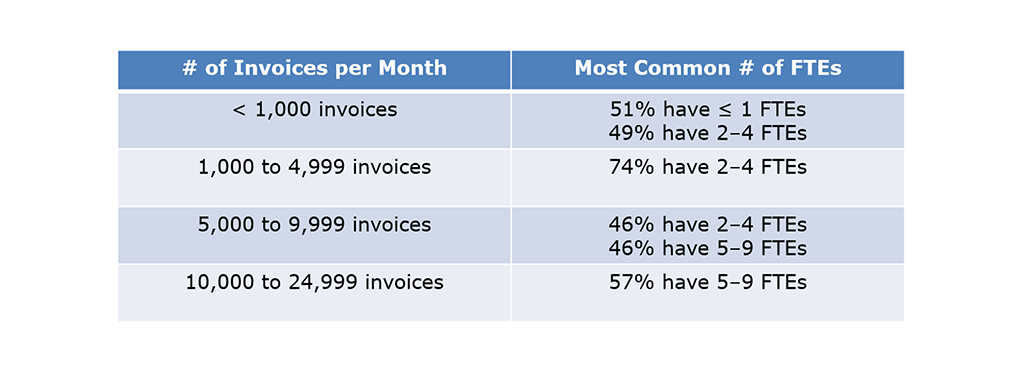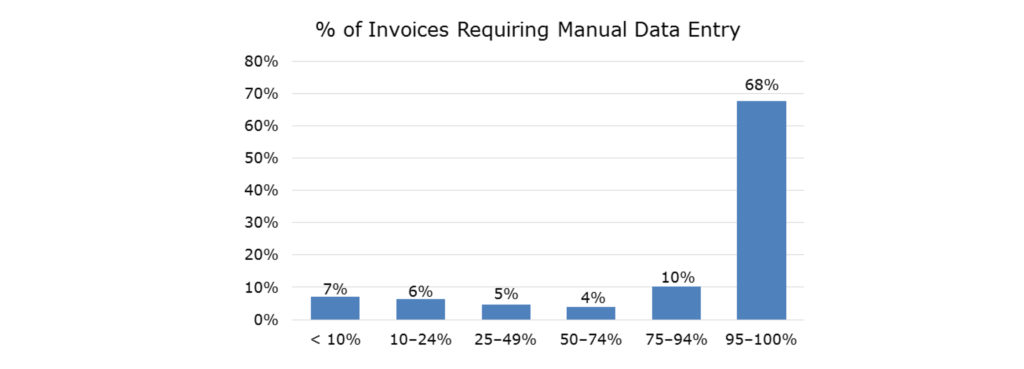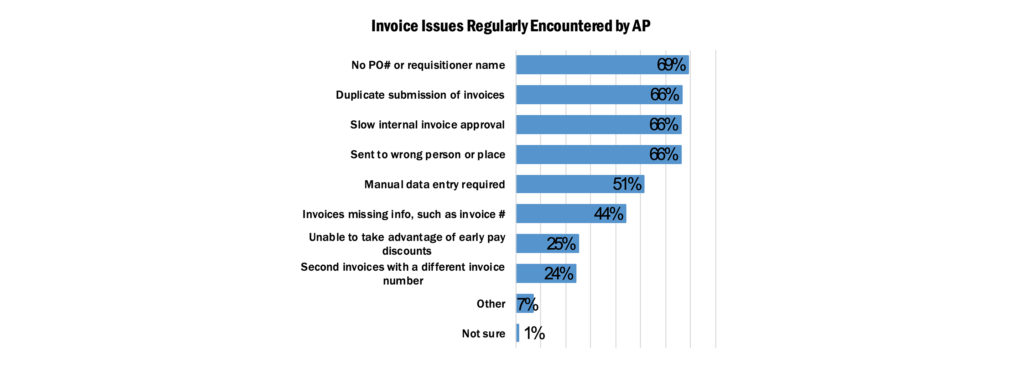Benchmarking Your Invoice Process: How Do You Stack up?

By Mary S. Schaeffer
We want to start this piece by owning up to the fact that all invoices are not created equal. This makes it difficult for different organizations to compare various metrics related to averages. But that doesn’t mean you shouldn’t try. Once you have the raw data you can evaluate whether your invoices are simpler (easier) than the norm or more difficult.
For example, an invoice for a magazine subscription should be much easier to process than an invoice in a medical setting with 300 line items of different supplies of differing grades. That is one reason for the disparity. The other big one, the elephant in the room, if you will, is the amount of automation used. This can make a huge difference in efficiencies. Let’s take a look at some metrics.
Staff Size
Let’s start off by looking at invoice processing staff size in comparison with number of invoices processed on a monthly basis. If you look at Exhibit 1, you will note that half the organizations have double the staff to handle the same number of invoices, at all invoice levels except the highest. We believe this is because at the highest level all organizations with a heavy load of invoices are now relying on automation to help handle the workload.

Manual Data Entry
One of the drivers for invoice automation is the elimination of manual data entry. This is the primary reason for the disparity in staff size for similar volumes of invoices. We have far too much of it. Not only is it inefficient, but humans make keying errors which either create additional work or, if undiscovered, result in a duplicate payment. The goal is 100% of invoices requiring no manual data entry.
As you can see from the data shown in Exhibit 2, only 7% of all organizations have managed to achieve a rate of 90% or higher. While 100% is probably not achievable, for a variety of reasons, it is not unreasonable to expect 98 or 99% touchless invoice processing.

Receipt of Invoices
The biggest change in the invoice landscape is the way organizations are receiving and managing invoices. As you can see from Exhibit 3, virtually every organization is now receiving invoices via email. That’s old news. The newsflash is that the majority of organizations are receiving the majority of their invoices by email. In fact, the number in this group has almost doubled in three years. We fully expect this growth to continue. Unsurprisingly, as shown in Exhibit 4, this growth is coming at the expense of invoices received through the post.

Invoice Headaches
The one thing that has not changed is the number and level of invoice problems. Alas, they continue. When asked to identify issues encountered on a regular basis, participants in an AP Now survey identified the same issues as they did three years ago. The only difference was the duplicate submission of invoices problem has considerably worsened. So much for progress. You can see the issues and the percentage of respondents who indicated they had the problem in Exhibit 5.
If proper attention isn’t paid to the duplicate submission of invoice nightmare, we could see duplicate payments start to rise. This would be unfortunate given the progress most accounts payable departments have made on this front. For few vendors voluntarily return erroneous payments. Some do issue credit memos for these payments but often these memos never reach the accounts payable processor. In a few unfortunate instances where processors don’t recognize the credit memo, they think it is an invoice and pay it; definitely not the outcome most would want.

The data and charts shown in this article all come from surveys conducted by AP Now.
Closing Thoughts
Organizations using automation solutions for invoice processing can make serious inroads on some of these problems. If the solution requires certain data, by its very nature, by its very nature, the problem will be minimized. Additionally, with automation, the invoice can be seen by the approver immediately and if he or she takes immediate action, there is really no reason why any early payment discounts should be lost. Likewise, no late fees should be incurred.
This is not to say that automation is the silver bullet when it comes to invoice problems because there is no such thing. Problems will persist. But it is as close as anyone can get.

